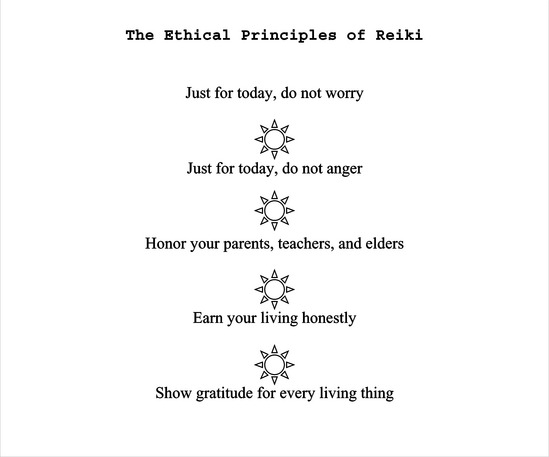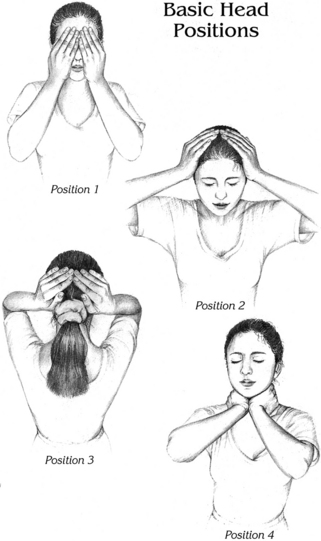Chapter 17 Reiki
 Initial Examination
Initial Examination
Past Medical History: Breast cancer, mastectomy, chemotherapy, and reconstructive surgery
Client Goals: To reduce pain and improve sense of well-being
Employment: Retired physical therapist
This chapter is a departure from the other therapy chapters in this book in several ways. First, the physical therapist is the client, not the clinician. Second, the client, not the clinician, searches and evaluates the literature before the decision is made to seek out a Reiki practitioner. Lastly, besides surgery, Reiki is provided as a single intervention by a Reiki practitioner and is not incorporated into a standard plan of care. This chapter provides an example of a knowledgeable healthcare consumer who is interested in receiving CAM and investigates the intervention for safety and efficacy. Details of legal, ethical, and cultural issues related to clients who seek therapies and healthcare considered to be CAM can be found in Chapter 3.
INVESTIGATING THE LITERATURE
Betty and her physicians had been unable to determine a specific cause for her pain. She had tried pharmacological and physical therapy interventions with little success. After someone in Betty’s support group had reported that Reiki helped her to “feel so much better,” Betty decided to investigate Reiki and find out if this intervention might help her feel better, too. While reading some background information about cancer and CAM, Betty found survey results, which suggests that individuals with chronic conditions tend to seek the services of complementary practitioners for concerns not adequately addressed by standard health care and because they perceive CAM practitioners to have values and beliefs about health and life congruent with their own.1–3 Persons with cancer were found to use CAM for a variety of reasons, including wanting to boost their immune system, relieve symptoms, improve their quality of life, feel more hopeful, and achieve greater control in their lives.4 More specifically, women with breast cancer sought CAM to improve their immunity, quality of life, and sense of control; prevent recurrence of cancer; and enhance their conventional medical care.5,6 Kelner and Wellman4 determined that people who specifically seek Reiki treatments do so in an effort to deal with emotional issues, address feelings of low energy, and promote health and well-being. Betty identified with the subjects in these studies and continued to search the literature for studies specifically on Reiki. First, she took a detailed approach in which preliminary reading was performed, followed by a search of databases and evaluation of the reviews and primary sources. Then she performed a more focused search of the literature by using the PICO approach.
Preliminary Reading
The word Reiki comprises the two Japanese characters, rei, meaning universal spirit, and ki, meaning vital life force or energy.7 A hands-on healing therapy, Reiki is a therapeutic approach in which the practitioner facilitates the delivery of universal energy to an individual to enhance vitality and promote the body’s innate ability to heal. The intention of the Reiki practitioner is to act as a conduit for the delivery of universal energy and thereby replenish and restore energy flow and balance.
Acceptance that a universal life force or energy exists is fundamental to understanding Reiki as a healing modality. This subtle energy, known as ki in Japanese, chi in Chinese, and prana in Sanskrit, is the essence that underlies vitality and intelligence of the universe and everything in it.8 As a pervasive and infinite energy, ki is organized into energy systems and fields that are penetrable and interactive with each other within individuals and between individuals and the environment, which allows universal energy to be received and exchanged.7,8 Inadequate life force or an imbalance of energy fields or flow is thought to be associated with conditions of disease and emotional distress, which suggests that energetic patterns should be add-ressed to create an environment for health and well-being.8
The system of Usui Reiki Ryoho grew out of the original teachings of Mikao Usui, a Japanese scholar who was born in 1865. Usui studied Japanese Shinto and old Japanese Tendai Buddhist texts, especially those containing forms of Taoism.9 Many versions of Reiki’s history exist, much of which has been revisited and discussed in a texts by Petter10 and King.11 Most persons interested in the origins of Reiki agree, however, that Usui studied, fasted, and meditated to seek an understanding of life. At some point during this quest, probably near or on Mt. Kurama, a sacred, spiritual place near Tokyo, Usui dramatically received a powerful form of energy now known as Reiki.7 He realized that this energy gave him a remarkable ability to heal and that he could easily transfer the ability to access and use this energy to anyone. Usui’s personal experiences and observations about the healing effects of Reiki helped him to realize that healing the spirit was as important as healing the body. Persons who learned responsibility and gratitude through the energy exchange of Reiki were better prepared to achieve and maintain health than persons who were unable to give back for what they received.7 So, Usui set out to create a system that would assist a person’s spiritual progression, healing the mind first.9 Five principles of Reiki emerged from Usui’s studies, practice, and observations (Figure 17-1).7
Usui trained many students and elevated between 15 and 20 to the level of master before his death in 1926. Among them, Dr. Chujiro Hayashi, a naval officer and talented healer, established a healing center in Tokyo. Hayashi had kept detailed records of the teachings and treatments he received and adapted Usui’s teachings to include the three degrees and the attunement process.10,12 Over time, Dr. Hayashi continued to modify his style of training and began to focus more on the physical healing nature of Reiki rather than emphasize the original spiritual aspects of Usui’s system. As Dr. Hayashi taught Usui’s original system and his own modified approach, other master students of Usui such as Toshihiro Eguchi did the same. Following the lineage of Reiki masters and their students is beyond the scope of this chapter, but this information can be found in books written about Reiki10,11 or on the Reiki Threshold website.12
Reiki was brought to the West in 1937 by Mrs. Hwayo Takata, a Japanese emigrant. Takata grew up on the island of Kauai, Hawaii, but returned to Japan to inform her parents of her sister’s death and to seek treatment for a tumor, gallstones, and appendicitis. Rather than agree to surgery for her condition Takata went to Dr. Hayashi’s Reiki clinic to receive daily Reiki treatment. In 4 months she was healed completely and convinced Hayashi to teach her Reiki. He did and followed her to Hawaii the next year, where he initiated her as a Reiki master. Before her death in 1980, Takata initiated 22 Reiki masters, who in turn have initiated Reiki masters throughout North and South America, Europe, New Zealand, and Australia.13
A complete Reiki treatment usually takes between 60 and 90 minutes. During this time, clients or receivers lie or sit in any position that is supported and comfortable. Practitioners then position their hands on or over several areas of the client’s body, usually beginning at the head and ending at the feet. The intention of the practitioners is for Reiki energy to be pulled through their hands in direct proportion to the needs of the receiver at each area. The practitioner feels the rise and fall of the energy as it surges through their hands and is mindful when the energy is no longer flowing heavily so that the hands can move to the next position. During a typical Reiki session 10 to 20 different hand positions may be applied (Figures 17-2, 17-3, and 17-4). Some practitioners closely follow a prescribed course of hand positions, whereas advanced practitioners, who are able to intuitively determine areas of the client’s body that require Reiki energy, may alter the order or the positions based on the client’s needs.14 Although hand placement over the chakra centers was not in the original teaching of Reiki, many newer Reiki masters have added these positions to their practice. Reiki practitioners recommend persons with chronic conditions receive three to four Reiki treatments in a row so that their body can be energized to its fullest capacity. After the initial series of sessions, frequency of treatment depends on the need of the individual.14
Stay updated, free articles. Join our Telegram channel

Full access? Get Clinical Tree


 Evaluation
Evaluation Plan of Care
Plan of Care Reevaluation
Reevaluation






